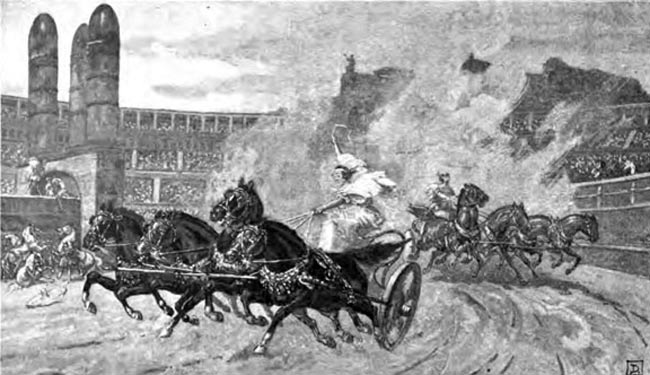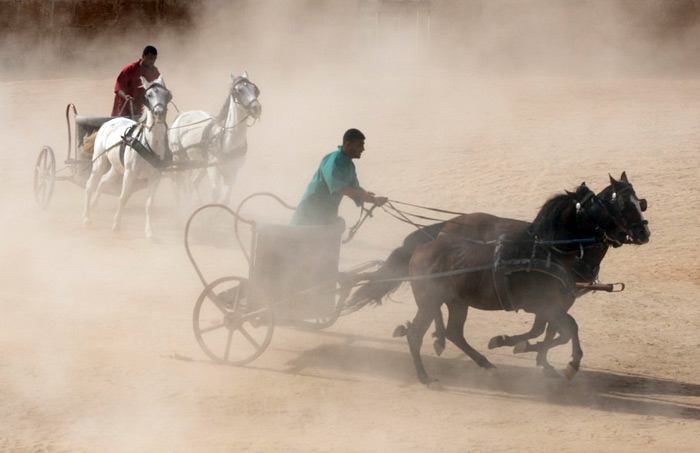Chariot Racing, where horses pull along a driver riding a chariot, was the most popular sport in Ancient Greece, Rome and the Byzantine Era, appealing to all social classes from slaves to the emperor.
 chariot racers
chariot racers Chariot Racing was known to be dangerous for the horse and the driver as they commonly suffer serious injuries from overturning and a broken chariot.
Drivers of the chariots were typically slaves or those who came from poor backgrounds. If they became successful in chariot racing, they would eventually become rich, buying their freedom.
Chariot racing was said to be the event that founded the Olympic Games in Greece. It was added in 680 BC expanding the racing games from a one-day event to a two-day event. It was a known to be a more important event than horseback riding which was removed from the Olympic Games.
The stadiums built for the sport grew and grew in size as it became even more popular. Chariot Racing was held in the Ancient Grecian stadium for horse racing and chariot racing called the Hippodrome, located in the southeast corner of Olympia. It was set out on the incline of a hill and the ground taken from one side served to form the guard on the other side. The end of the hippodrome was curved and the other end four-sided figure with a wide entry in lower level stalls for the chariots and horses.
In Rome, the Circus Maximus was said to hold more than 350,000 spectators. It was a huge, oval shaped stadium that had two long parallel sides and one rounded end with seating all around. The other end was filled with stables and starting boxes. The center of the race course had a low wall that had decorative sculptures tilted to let the spectators know how many laps had been completed.
 modern day chariot racers
modern day chariot racersThe race was made of seven laps or 8.4 kilometers and would last fifteen minutes. As many as 12 chariots would race beside each other. For their horses to become fast in racing, they need to weigh very light and small as possible. Racing chariots in Rome were made of wood and afforded little support or protection for the driver, where he basically needed to balance himself on the axle as he drove.
Chariot Racing continued in the Byzantine Era (Eastern Roman Empire) where cheating and bribes was common. Chariot races were important during this era because it was a way to support social class and political power. It was held in the Hippodrome in Constantinople. They were sometimes held during the emperor’s birthday. Spectators would wear the same color as their much loved charioteers. These charioteers later had fan clubs and factions that got overgenerous clothing and hairstyles.
The race declined during the seventh century after the war between the Roman Empire and the Arabs. The last chariot race was held in Rome was in the Circus Maximus in 549 AD.
Related Pages
- About Extinct and Ancient Sports
- About Carriage Driving, sports in which horses or ponies are hitched to a wagon, carriage, cart or sleigh by means of a harness.
- Chariot Racing was part of the Ancient Olympics
- List of Extinct Sports
- Complete list of sports


 Current Events
Current Events